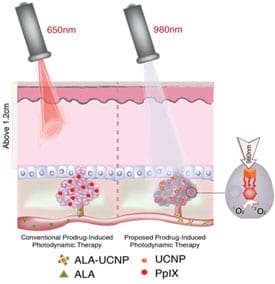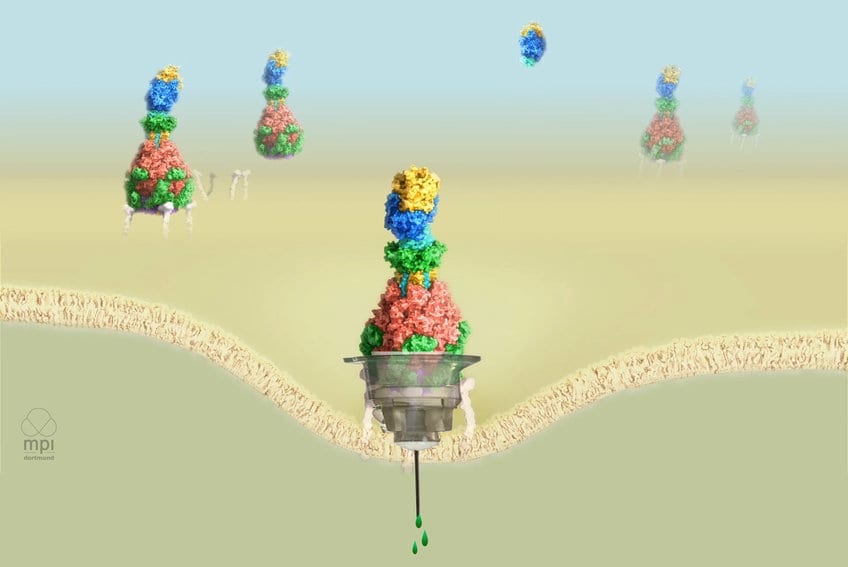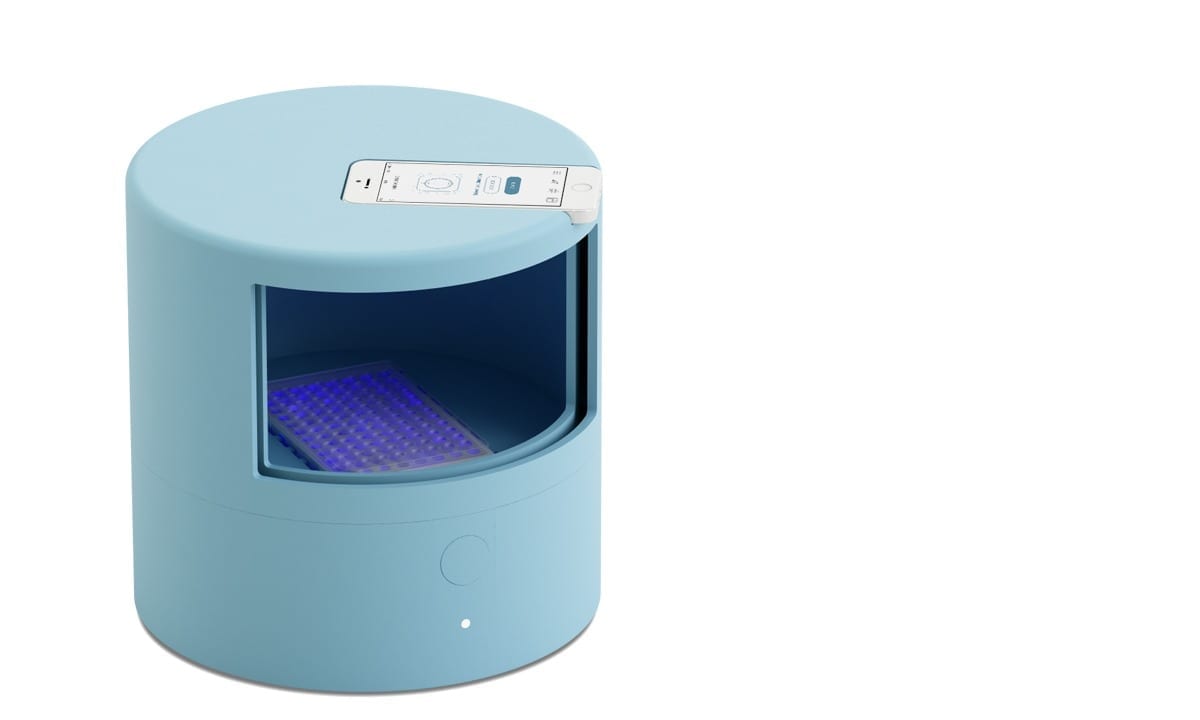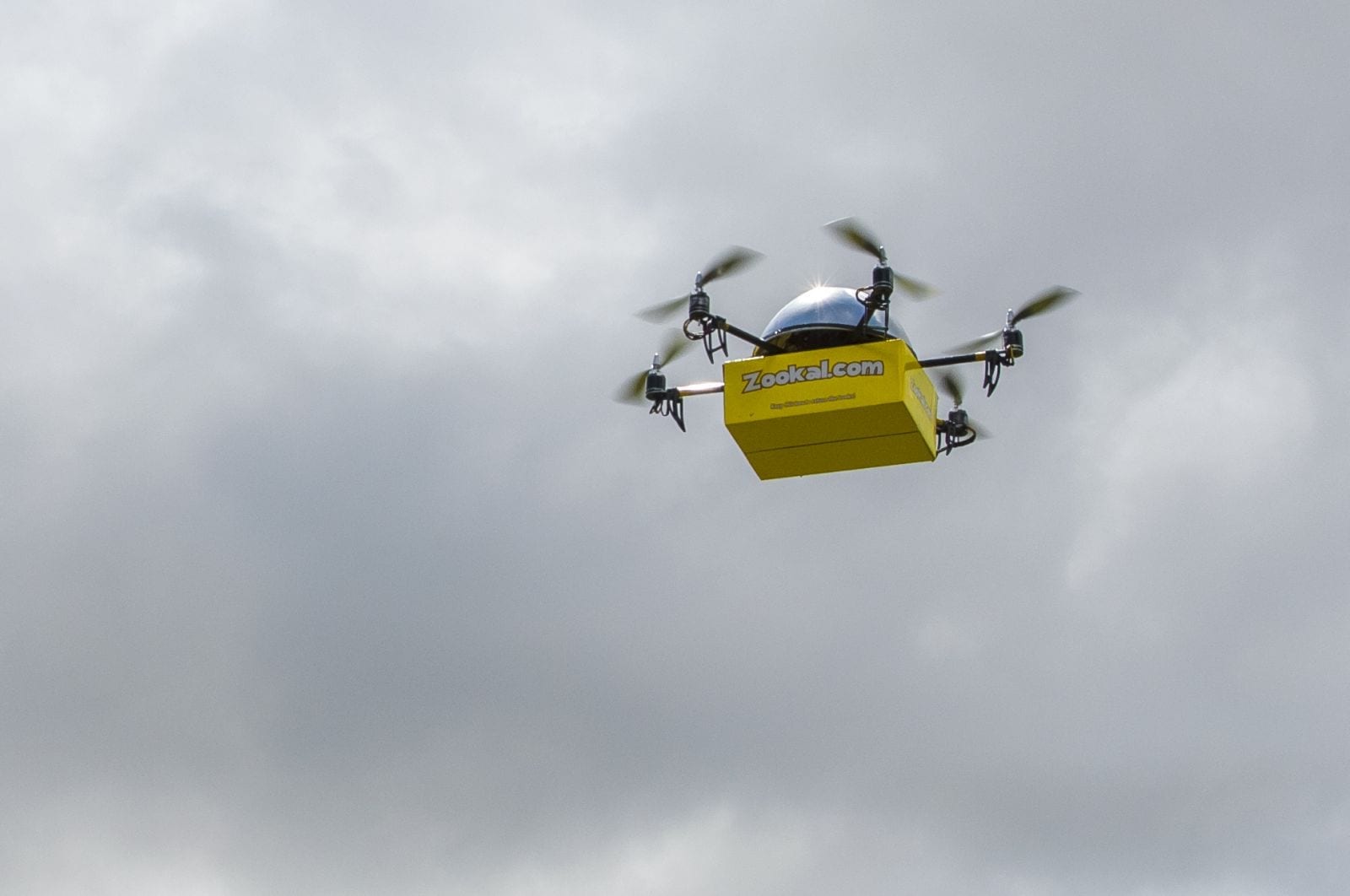
Nanoparticles developed at UMass Medical School advance potential clinical application for photodynamic therapy for cancer
An international group of scientists led by Gang Han, PhD, has combined a new type of nanoparticle with an FDA-approved photodynamic therapy to effectively kill deep-set cancer cells in vivo with minimal damage to surrounding tissue and fewer side effects than chemotherapy. This promising new treatment strategy could expand the current use of photodynamic therapies to access deep-set cancer tumors.
“We are very excited at the potential for clinical practice using our enhanced red-emission nanoparticles combined with FDA-approved photodynamic drug therapy to kill malignant cells in deeper tumors,” said Dr. Han, lead author of the study and assistant professor of biochemistry & molecular pharmacology. “We have been able to do this with biocompatible low-power, deep-tissue-penetrating 980-nm near-infrared light.”
In photodynamic therapy, also known as PDT, the patient is given a non-toxic light-sensitive drug, which is absorbed by all the body’s cells, including the cancerous ones. Red laser lights specifically tuned to the drug molecules are then selectively turned on the tumor area. When the red light interacts with the photosensitive drug, it produces a highly reactive form of oxygen (singlet oxygen) that kills the malignant cancer cells while leaving most neighboring cells unharmed.
Because of the limited ability of the red light to penetrate tissue, however, current photodynamic therapies are only used for skin cancer or lesions in very shallow tissue. The ability to reach deeper set cancer cells could extend the use of photodynamic therapies.
The Latest on: LinkedTV
[google_news title=”” keyword=”LinkedTV” num_posts=”10″ blurb_length=”0″ show_thumb=”left”]
via Google News
The Latest on: LinkedTV
- Feed has no items.
via Bing News










